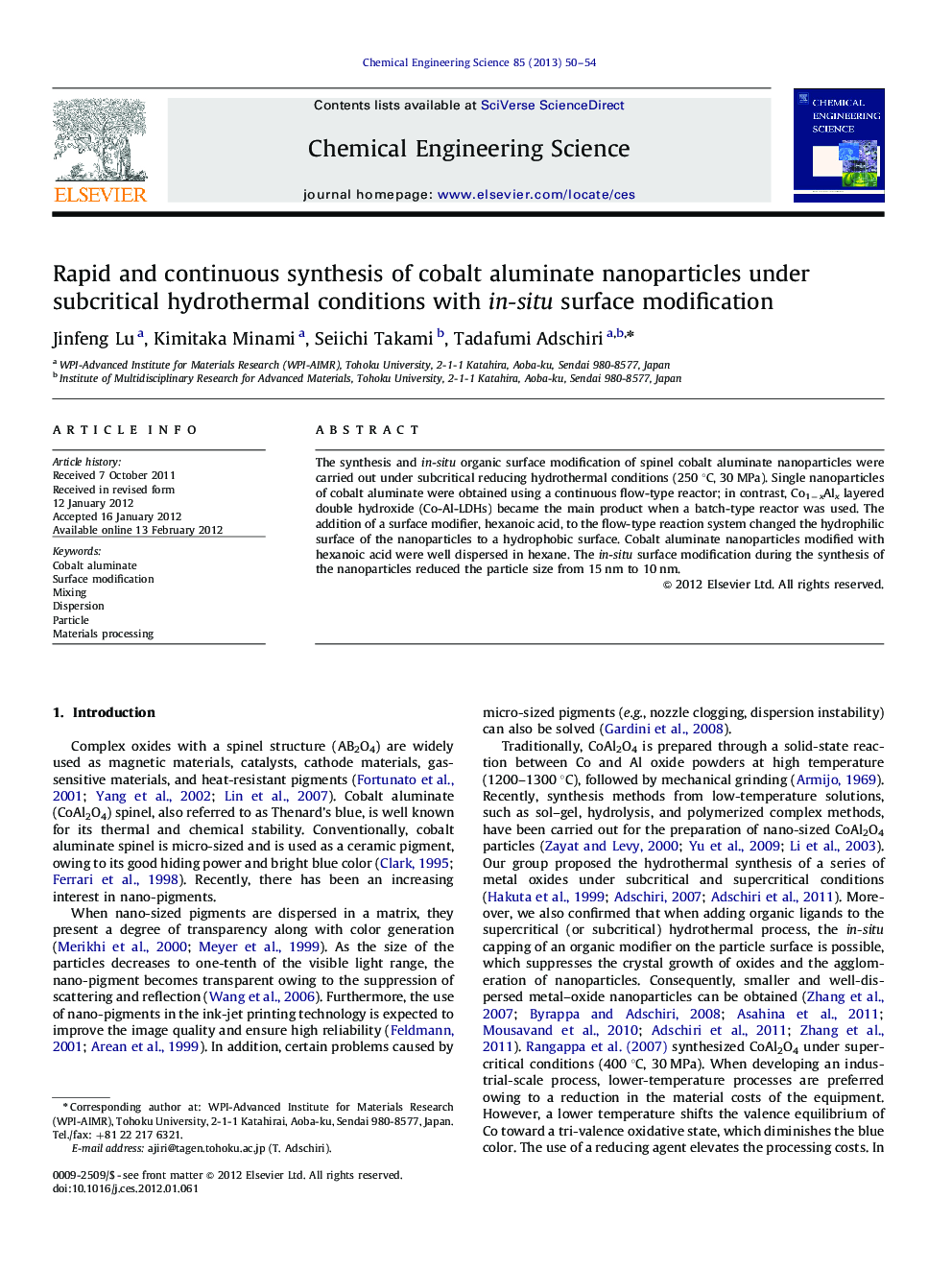| Article ID | Journal | Published Year | Pages | File Type |
|---|---|---|---|---|
| 155539 | Chemical Engineering Science | 2013 | 5 Pages |
The synthesis and in-situ organic surface modification of spinel cobalt aluminate nanoparticles were carried out under subcritical reducing hydrothermal conditions (250 °C, 30 MPa). Single nanoparticles of cobalt aluminate were obtained using a continuous flow-type reactor; in contrast, Co1−xAlx layered double hydroxide (Co-Al-LDHs) became the main product when a batch-type reactor was used. The addition of a surface modifier, hexanoic acid, to the flow-type reaction system changed the hydrophilic surface of the nanoparticles to a hydrophobic surface. Cobalt aluminate nanoparticles modified with hexanoic acid were well dispersed in hexane. The in-situ surface modification during the synthesis of the nanoparticles reduced the particle size from 15 nm to 10 nm.
► CoAl2O4 was obtained under subcritical reducing conditions using a flow reactor. ► Preventing the oxidation of Co2+ enabled the formation of a blue pigment. ► In-situ surface modification changed the surface of the nanoparticles into a hydrophobic surface. ► Nanoparticles modified by hexanoic acid were well dispersed in hexane. ► The particle size decreased to 10 nm.
